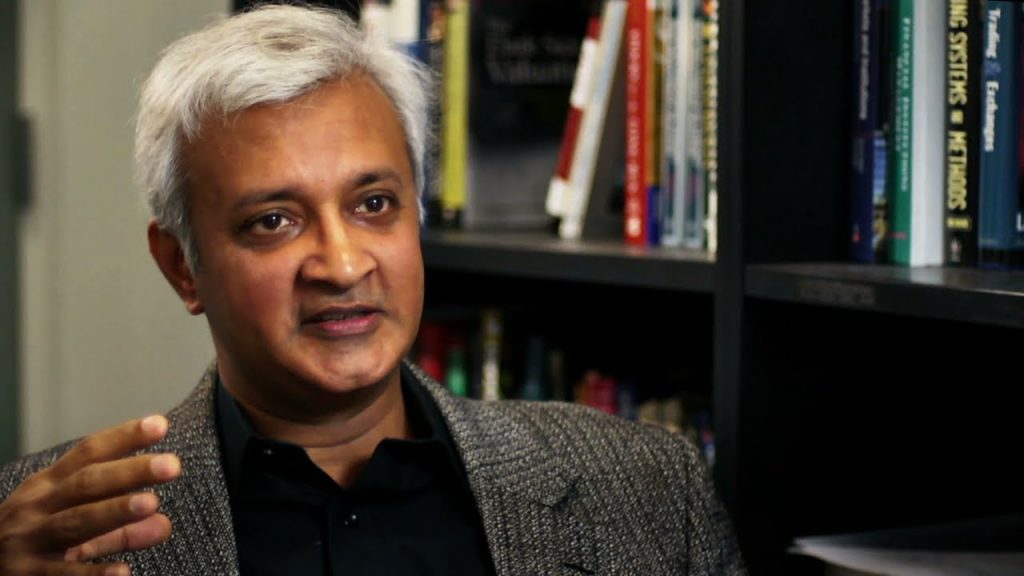Admissions Tip: Clearing Up the Background Check

With a slew of schools releasing their R1 notifications, we know that many of our readers will be asking about the background checks conducted by leading programs. Here are some quick facts to help explain the process:
1. What are background checks?
Background checks involve the verification of information that a candidate has provided in his or her MBA applications. Although the process varies from school to school, it usually includes checking that an applicant attended the undergraduate (or graduate) school(s) that he or she claims to have attended, received the grades indicated and earned the GMAT score reported. It also involves the verification of the candidate’s employment history, job titles, starting and ending dates and salary/bonus information. Finally, some background checks involve contacting recommenders to verify their support and confirming applicant involvement in community activities.
2. Do all schools conduct background checks?
When do they do this? How do they have time? Many of the leading MBA programs like to verify the information that has been provided by applicants. This is typically done only for those applicants who are admitted, since there is no sense in expending resources to verify information for applicants who do not make the cut. Most background checks occur in the spring – after decisions for most rounds have been released and students begin sending in their deposits. In many cases, the schools outsource this function to a professional risk consulting firm like Kroll.
3. Why bother with background checks? Don’t the schools trust me?
The purpose of background checks is to protect all stakeholders of the MBA program (students, faculty, staff, alumni) from those who would falsify their backgrounds to gain an unfair advantage in the admissions process. Some schools opt to investigate the backgrounds of a relatively small sample of randomly selected admits, hoping that the mere possibility of a check will give applicants incentive to be as honest as possible. In a way, this measure therefore serves to increase the adcom’s trust in its applicants.
4. What about very minor discrepancies?
It’s natural for admitted applicants to get anxious at this point in the process, wondering whether their offer of admission might be rescinded if, for instance, the “start date” for an old job is one week earlier than the start date that HR reports during the background check. The good news is that most schools report any discrepancies back to the applicant and give them a chance to explain a plausible mistake. Having said that, it of course makes sense to do your best to verify all of your information before applying to school, so that you can be certain that the data you report is accurate. Should any potential issues come to mind after submitting, you might consider preemptively contacting the adcom if the error is serious enough.
5. Won’t the background checking process alert my employer to the fact that I am applying to b-school?
Since the process typically takes place long after you’ve been admitted, this ideally won’t be an issue, as most applicants give their employers ample notice and take some time off before school. Having said that, the schools still try to conduct the checks in a discrete fashion, consulting with your HR department to verify your dates of employment and salary – but not necessarily revealing that you are heading to business school.
6. How can I ensure a smooth background check?
While the obvious answer is to be honest in your applications, it’s also important that you don’t fudge anything out of laziness (a common occurrence). Dig up those old W-2 forms or check with former employers in order to present the committee with the most accurate information you can.
Stay up to date with all of our latest MBA admissions tips here.
This article has been edited and republished with permissions from our sister site, Clear Admit.
New Partnerships Marry Business with Social Purpose at Oxford Saïd

Late last year the University of Oxford Saïd Business School partnered with the Global Thinkers Forum—a social purpose organization focused on accountable leadership, women’s empowerment, and youth development—to promote the annual Global Thinkers Forum Awards for Excellence. The event took place at the British Library on November 30, 2017, and celebrated recipients of the GTF Excellence in Global Leadership awards.
As part of its partnership, Oxford Saïd sent school delegates including Dr. Dina Dommet, director of student and program services; Dr. Marc Ventresca, associate professor of strategic management; and Amy Major, MBA recruitment manager. Many current MBA students, alumni, and university staff also attended.
“The work of the GTF is to build, recognize, and value global leaders in key fields—these are people who embody a breadth of vision to engage the challenges of our world and who bring a disciplined focus to support women’s leadership and new models of youth development, especially in the Middle East, the Gulf States, and Africa,” Ventresca said at an event underscoring the many deep ties between Oxford and Forum.
“GTF was incubated at Oxford, in the original academic work and action research of founder and CEO Elizabeth Filippouli,” he added in a statement. “Seven years on, it now encompasses a wide range of initiatives and partnerships in the United Kingdom and globally. The ties with the wider Oxford family are broad and deep, and each year go and grow in new directions.”
The Global Thinkers Forum brings together a diverse network of influencers and thought leaders from a wide variety of subjects and industries. Its goal is to encourage these leaders to share their visions of the future so they can effect positive change in the world around them. This year, the event’s theme was “The Trust Imperative in an Era of Uncertainty,” and one of the award recipients was Radha Basu. Basu works at iMerit.com, an AI and skill development agency in India and the United States. And during Hilary Term, he’ll be bringing his experience to Oxford Saïd as a guest lecturer.
“This event and the partnership with Global Thinkers Forum is one of the many ways our students can engage with and benefit from innovative work of our alumni,” Dommett said in the same press release.
Find out more about the recent event here.
This article has been edited and republished with permissions from our sister site, Clear Admit.
What You Don’t Know About MBA Admissions Data Forms

As we approach the new year and many of our readers begin to work in earnest on their round two applications for the January deadlines, we would like to turn our attention to an oft overlooked element of the MBA application process: the application data forms. These forms—typically referred to as ‘data forms’ for short—are the online forms that one fills out when applying to a business school. While the forms used to be straightforward and brief (essentially amounting to contact information, academic information, and work history), they have been expanding in some areas and have become an increasingly important part of the mix of application materials. In the wake of an industry-wide reduction in the number of essays required by each school, many programs have actually shifted questions away from the essays and into these forms (as ‘short answer’ questions). As such, it is important to pay close attention and address the data forms early—and to avoid leaving them for completion on application deadline day. In fact, it can be rather dangerous to not give data forms the same amount of time and care you would afford any other component of your application.
In this tip we will address the commonly asked questions across all school’s data forms. For our next admissions tip, we will examine some of the more unusual questions asked by a few schools.
Contact Information
Schools need to communicate with applicants at various stages of the admissions process. It is important that they are able to do so, so the contact information questions address this issue. Most communication these days will occur online, so obviously the e-mail address is important. It is probably best to use a personal e-mail address, rather than a work e-mail address, so schools can continue to communicate with you once you have left your work. You should also make sure the e-mail address is appropriate, mrhunk@aol.com might not send the right signals. For those students who are admitted, a regular mailing address will be used to send out more detailed information in the form of an “admissions packet.” Often times, schools will ask for a current address, and a permanent address. These can be the same, but the difference will occur, for example, when a candidate is working on a temporary assignment.
Background Information
Schools will ask a set of questions to better understand your background. They will generally ask about your parents, specifically their employment status and their highest level of educational attainment. This can be meaningful for the admissions committees who might be seeking out those candidates who have achieved careers that are very different from the achievements of their parents. It also signals those who are first generation in terms of attending college. This may signal a candidate’s grit and determination. On the other hand, a candidate who has parents who are highly successful and went to elite schools may benefit from a bit of an “apple doesn’t fall far from the tree” bias. Some schools will also ask about siblings, partners and children.
The majority of schools also seek to learn if your relatives have connections with their program, or the wider institution.
Academics
The key to addressing the academics questions is to follow the specific directions of each school. They may want a PDF of a transcript to be uploaded of your undergraduate school record, or they may want all transcripts from all schools you have attended, whether for additional coursework, transfer credits and so forth. Most schools will ask for your overall GPA, and also will be explicit on whether to convert a GPA that is not on a 4.0 scale; the common rule in this regard is to not convert, and to identify what the scale is. Some schools ask specifically if you have covered course work in accounting, statistics, calculus and economics. These are not pre-requisites, but help schools identify your analytic skills. The majority of schools will ask for self-reported transcripts upon application and only require official transcripts after they have made an admissions decision, but some might ask you to bring those documents if you are invited to interview.
Work History
All schools will ask you to upload a resume. While some programs will be specific about the length of the resume, keep in mind that they generally prefer one page. Beyond uploading a resume, you will also be able to complete a work history section in the online application, where you enter each of your work positions. Most schools do allow a new entry for each new position, regardless of whether it is for the same company, a few require just one entry per employer. Each school will tell you specifically how it wants you to enter this data. For most schools you are asked a variety of questions, including beginning and ending salary, bonuses, and so forth. You should also have an option to complete your job function and role. This is a very important text box to complete with considerable thought. You will have a limited number of characters, usually, to establish your growth and impact. One or two schools do not have this option, which places more weight on your resume and essays. Schools will generally ask you how many years work experience you will have, at the time of matriculation, rather than the time of application. Some will also ask how many years of management experience you have.
Test Scores
All the schools we cover accept both the GMAT and the GRE tests. It is important to read the instructions for each school in terms of how to report your test scores. A few schools want to know all your scores, and may look at the individual breakdowns of components of the scores. A few schools also ask whether you plan to retake the test, after you submit your application, at least one school asks if you would retake the test if asked. Schools will also require a test for English communications for those who are not native English speakers (unless the language of instruction for undergraduate was English, in which case most schools will offer a waiver). While the TOEFL is the most commonly used test, there are also other tests that schools will use like the IELTS, so it is important to review the requirements of each school you are interested in.
Other Activities
Most, but not all schools will ask you about your activities outside of work, and your extra-curricular activities while you were an undergraduate student. They want to see if you are well-rounded, and seek to identify other passions you might have, that will make for a richer MBA learning environment for all. It is also a good place to show case additional opportunities for your leadership and ability to make an impact. Each school asks these questions slightly differently. Some schools ask about hobbies, some do not. Some schools ask you to list the most important activities in which you have been involved, forcing you to prioritize with a limited number, some schools have free-flowing text boxes for you to answer the questions. One school does not ask about these activities at all, but their instructions for the resume clearly state to include them in that document. Regardless, it is important to read directions carefully, and consider your application in a holistic manner.
Goals
Probably the biggest shift in the use of data forms in the last few years is the increasing use of this medium to examine your career goals. You may be asked about your short-term goal (e.g. your career path directly out of the MBA program) and some schools also ask about your long-term goal (the position you would like to hold 5+ years after earning the MBA). A few schools will also ask for an alternative short-term goal if your preferred goal does not work out. Addressing these questions with considerable thought will be crucial. Schools really want candidates that have thought thoroughly regarding why they are applying. Some school have stopped asking these questions in the essays, so they rely on the data form answers.
Marketing questions
Finally, a few schools use the data forms to understand how you first learned about the program, and what other marketing events you may have attended. They might also asked who you met and know, from the school, during the process of putting your application together. If you have developed a network of alumni at the school and these questions are being asked, make sure you highlight who they are. Much like the questions for background information, any time you can highlight your connections to the school can only be an advantage.
For our next admissions tip, we will explore more of the unusual questions that a few schools ask in their data forms, which cover issues like the feared “To which other schools are you applying?” as well a move to ask more internationally focused questions.
This article on MBA Admissions Data Forms has been edited and republished from our sister site, Clear Admit.
Check out more MBA admissions advice you cannot miss here.
A New Year, A New Dean: NYU Stern Taps Insider to Fill Top Role

There will be a new dean at the helm when the NYU Stern School of Business rings in 2018, but he’s certainly not a newcomer to the school. NYU President Andrew Hamilton and Provost Katherine Fleming today announced that Rangarajan “Raghu” Sundaram, who joined Stern’s faculty more than two decades ago, has been appointed as dean, effective January 1, 2018.
Sundaram, a professor of credit and debt markets as well finance, was selected by Dean Peter Henry in 2016 to join Stern’s leadership team as vice dean for MBA programs. In that role, he has overseen the school’s full-time MBA program; the Langone part-time MBA program; multiple dual-degree programs; and the Executive MBA program, among others. He also helped establish the Creative Destruction Lab, launch the school’s new, specialized one-year MBA programs, and bring business leaders from companies including Amazon, Jigsaw, Microsoft, IBM, and PayPal to join Stern’s newly created Tech MBA Advisory Board.
Sundaram was among several strong candidates for the dean’s post, the school reports. “But in the end, the Search Committee found the best candidate here in our own midst,” President Hamilton said in a statement. “And rightly so. Raghu Sundaram has a strong, highly-regarded record of leadership and innovation, scholarship and teaching, and collegiality and service to both Stern and the university. In a field of distinguished candidates for Stern’s deanship, Raghu stood out.”
As vice dean, Sundaram is also credited with helping extend the school’s New York City–based EMBA program to downtown Washington DC, and shepherding Stern’s entry into online education through the launch of a series of online certificate programs.
As a researcher, Sundaram’s work has focused on agency problems, executive compensation, corporate finance, derivatives pricing, credit risk, and credit derivatives, areas in which he has published extensively. He also has won several awards, including the Jensen Prize and the Stern School’s inaugural Distinguished Teaching Award, and was a finalist for the Brattle Prize and a recipient of research grants from the National Science Foundation and other organizations.

Incoming NYU Stern Dean Rangarajan “Raghu” Sundaram.
The Indian-born Sundaram holds an MBA from Indian Institute of Management, Ahemedabad, as well as both an MA and PhD in economics from Cornell. He taught on the faculty of the University of Rochester for eight years before joining Stern’s faculty in 1996.
Sundaram will replace outgoing Dean Peter Henry, who announced in February of this year his plans to step down and return to full-time scholarship. “At a time when advanced-nation rhetoric and a seeming unwillingness to commit to the reforms needed for growth are at odds with global population trends and an increased need for investment in the developing world, I believe now is the time for me to make further contributions as an economist, advisor and Stern professor,” Henry stated at the time explaining his decision.
Learn more about newly appointed NYU Stern Dean Rangarajan Sundaram.
This article has been edited and republished with permissions from our sister site, Clear Admit.
From Just One Woman to 39 Percent of the Class—and Other Ways LBS Has Changed Over the Past 50 Years

The 2017-18 academic year marks the 50th anniversary of the MBA program at London Business School (LBS). Since 1968, the school has offered a two-year Master of Science (MSc) in Business Studies degree program—the original MBA—and has continuously refined its offerings since that time. In celebration of the 50-year mark, LBS is looking back at how far the program has come.
The Beginning
In 1966, two years after London Business School opened its doors, the school launched a two-year Master of Science (MSc) in Business Studies. The first class consisted of 35 men and just one woman, with the average age around 25 years old. The goal of the two-year degree was to prepare students for employment. In fact, according to the website, employment was seen as “one of the most significant aspects of the school’s progress at this stage of its development.”
After graduation, most students joined manufacturing firms, and a few went into merchant banking, management consultancy, and advertising. Their job functions included marketing and financial executives, planning personnel, and personal assistant roles.
As for the feedback on the first year of study, a report on the class stated, “The overall academic performance of the students during the year has been more than satisfactory. The course of studies is arduous and the number of hours of work required is much above average, imposing a considerable workload both on students and staff.”
The Early Years
In the early years of the program, growth was slow but steady. In 1971, the class size grew to 86 students and by 1975, 108 students were admitted, including 16 women. Throughout this time, LBS made various modifications to its program.
- In 1973, LBS introduced the International Management Program, which gave 10 students the change to study abroad in Paris or at New York University.
- In 1978, the International Management Program expanded to include Harvard, Stanford, Wharton, Chicago, and top European institutions.
The 1980s
The 1980s were a time of change for LBS and the MBA program. During these years, banking and finance overtook manufacturing as the top industry for graduates. In addition, LBS continued to increase its international reputation; about half of its class comprised non-British students by the end of the decade, with more 30 nationalities represented. Most importantly, the Class of 1987 was the first to be awarded an MBA rather than an MSc degree. In an annual report, the school stated, “This more accurately and effectively conveys the spirit of the program, and the type of qualifications our students are aiming for.”
- In 1982, LBS introduced a new part-time master’s program. The first class accepted 60 people and allowed students to complete their studies over two and a half to three years while still working.
- In 1984, three more U.S. schools joined the International Exchange Program including Dartmouth Tuck, MIT Sloan, and Northwestern Kellogg.
The 1990s
In the 1990s, LBS adopted a more flexible format for its MBA program. The school added increased training in “soft skills” and introduced computer-based management simulation games. The class size also increased to 271 students, with 79 percent of students coming from outside the United Kingdom. Consulting became the top choice for graduates, and manufacturing shrunk to just 11 percent.
- In 1992, LBS introduced a language requirement where students must be fluent in English and one other language to graduate. In addition, the part-time master’s was re-launched as the Executive MBA.
- By 1996, entrepreneurship became an important part of the program, and the school launched several electives with an entrepreneurial focus, including “Small Business Management” and “Financing the Entrepreneurial Business.”
- 1999 was the first Financial Times Global MBA ranking, and LBS ranked #1 in Europe and #8 in the world—the only non-U.S. school in the top 10.
The 2000s
By the 2000s, LBS had become a global leader in MBA education—and in 2009 it became the first non-U.S. school to top the Financial Times ranking. The MBA program was reformatted for increased flexibility, allowing students to graduate in 15 to 21 months. The class size also increased to 315 students, with 89 percent of the class from 59 countries outside the United Kingdom.
- In 2001, LBS ranked as the best Global MBA by the Financial Times, and Forbes ranked LBS as #1 in Europe and #2 in the world for return on investment.
- In 2003, LBS became the first European school to join the Forté Foundation to increase women in business, and in 2005, women made up 22 percent of the class.
The 2010s
In the last decade, London Business School once again revised its MBA program to give students even greater flexibility. The school also continued to increase its size, welcoming 468 students by 2018—12 times the size of the first class in 1968. In addition, women now make up 39 percent of the MBA class, and students represent 77 different nationalities.
- In 2010, LBS started its Incubator Program to help entrepreneurs. As of 2017, 58 businesses have completed the incubator, raising more than £31 million and creating 440 full-time jobs.
- In 2012, LBS launched the Global Business Exchange (GBE), giving students the opportunity to spend a week in another country with options ranging from South Africa to the United States.
- In 2016, LBS completed its first fundraising campaign, raising £125 million.
To learn more about the 50th anniversary celebration of London Business School’s MBA, visit the school website.
This article has been edited and republished with permissions from our sister site, Clear Admit.
Just How Much Are Stanford MBA Grads Getting Paid?

Wondering what kind of pay day you can expect if you are among the select 6 percent of applicants who gain admission to Stanford Graduate School of Business (GSB)? Are you sitting down? Perhaps you should be, because the school’s 2017 employment report—released today—reveals record-breaking salaries for the third year in a row.
On average, last year’s graduates, now in their first year of post-MBA work, are pulling down an annual base salary of $144,455—a $4,000 increase over last year’s all-time high (median base compensation was $140,000, also besting last year’s by about $4,000). But it doesn’t stop there. Average signing bonuses, reported by 51 percent of the class, are also up—setting a new record at $29,534. (Median salary bonuses remained unchanged at $25,000.) And as if that weren’t enough, another quarter of the class reported other guaranteed compensation (OGC) surpassing last year’s all-time highs by a whopping $10,000. Average OGC for 2017 grads was $83,065, and median OCG was $50,000. The range was $6,750 to $450,000.
The GSB, in announcing these most recent employment statistics, pointed out that OGC will no longer be tracked by the MBA Career Services and Employer Alliance (CSEA) and that it began last year capturing an “Expected Performance Bonus” metric in its place. This measure includes both guaranteed and non-guaranteed cash compensation based on performance. Though the average and median EPB for the Class of 2017, at $71,946 and $35,000, were each lower than OGC figures, a full 65 percent of the class expected to receive such performance-based compensation, up from 61 percent last year—and substantially higher than the quarter of grads who reported OGC. The reported range for EPB was $5,000 to $450,000.
Stanford MBAs claim higher pay days than graduates of any other school, in part thanks to higher base compensation. Stanford’s median base—$140,000—surpassed that of Harvard Business School (HBS) ($135,000), the University of Pennsylvania’s Wharton School ($130,000), and the University of Chicago Booth School of Business ($125,000). Grads from both Stanford and HBS reported the same median starting bonus of $25,000, but the $50,000 in other guaranteed compensation reported by Stanford grads was double what grads at the school’s top East Coast rival reported.
Tech Less of a Draw Than in Prior Years
Bucking the trend at many other business schools—where increasing percentages of students are clamoring to enter the technology industry—fewer Stanford MBA Class of 2017 grads headed into tech. In what the school deemed “a rebalancing of the scales among the three top industries,” interest in technology dropped 8 percentage points—to a mere 25 percent of the class. Almost a third of the class—32 percent—headed into finance, up a point over last year. Consulting, too, gained four percentage points to attract 20 percent of the most recent class.
“Our leading employers span a wide variety of industries,” Maeve Richard, assistant dean and director of the Career Management Center, said as part of a news story announcing the latest employment statistics on the Stanford GSB site. “They represent organizations in such areas as consulting, finance, technology, consumer products, healthcare, and nonprofits. What they do have in common is work environments that offer the ability to make an impact with a focus on agency, career development, diverse challenges, and responsibilities.”
Indeed, a record-setting 411 organizations hired Stanford MBA students and graduates for internships or full-time roles this past year—up 7 percent over last year and 34 percent from six years ago. A whopping 95 percent of employers hired just one or two students—an indication of the breadth both of GSB employers and student interest.
Uptick in Women Headed into Private Equity and Venture Capital
“In addition, we observed that the number of women going to private equity and venture capital has nearly doubled since 2014,” Richard said as part of the Stanford GSB article. “While we do not disclose fine-grain gender detail and the numbers are still small, we see a definite widening of the cracks in the glass ceiling.”
It’s no wonder that Stanford GSB women would increasingly be looking to break into PE and VC, since those fields yield some of the very highest pay days. The highest reported base salary for the Class of 2017—$285,000—went to a graduate headed into venture capital. Median base salaries for both PE and VC were $175,000, $40,000 higher than for the class as a whole. And it was a graduate headed into a private equity analyst role who reported the mind-boggling $450,000 in other guaranteed compensation. The median signing bonus for PE—at $50,000—was also the highest in the class (on par with investment banking). Though it was a graduate headed into a marketing role who claimed the highest signing bonus of the class, $77,000.
Timing and Location of Offers
Stanford GSB reports full-time offer and acceptance rates at graduation and three months out from graduation—as mandated by CSEA standards. But in past years—as this year—the school has made a point of underscoring the fact that its graduates’ confidence in their ability to find the perfect job sometimes means they hold out longer in accepting their ultimate position than graduates from some other schools. That said, 92 percent of the Class of 2017 had offers three months out from graduation—up two points over last year—and 88 percent had accepted offers, a five-point increase year over year.
In terms of where geographically the most recent Stanford MBA grads wound up, the West was the winner—with 62 percent of grads choosing to remain in the region. This represents a 3 percent decline compared to last year. “Counter to assumptions, only 35 percent of these West region jobs relate to technology,” the school notes. “Finance represented 26 percent, and consulting represented 15 percent.” The Northeastern United States drew the second-most Stanford grads, 16 percent of the class. Another 11 percent took international jobs.
Also of note, 16 percent of the class launched their own startups upon graduation, up one percentage point over last year. Leading industries for these entrepreneurial students include software (15 percent), finance (11 percent), healthcare (9 percent), real estate (9 percent), and internet services (9 percent).
More Grads Seek Socially Responsible Roles
Another notable shift in these most recent employment statistics is the increasing number of Stanford MBA grads heading into careers in socially responsible roles or organizations. Thirteen percent of this year’s graduates answered yes to the question, “Have you chosen a socially responsible role in a private business?” That’s up from just 8 percent last year, when the question was first introduced.
Watch this space for an upcoming piece that will highlight several Stanford students who chose internships focused on social impact this past summer—a Clear Admit exclusive.
This article has been edited and republished with permissions from our sister site, Clear Admit.
